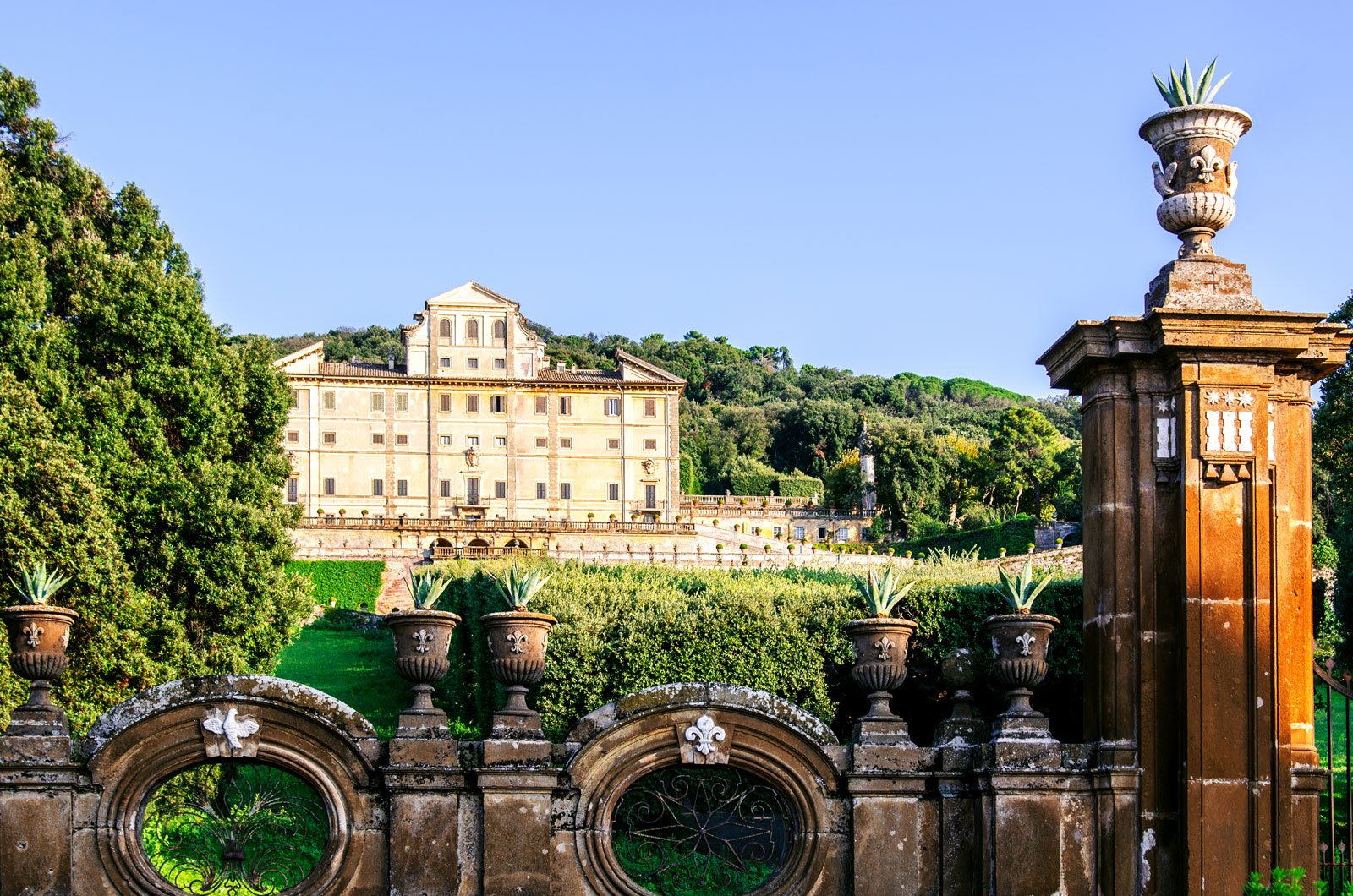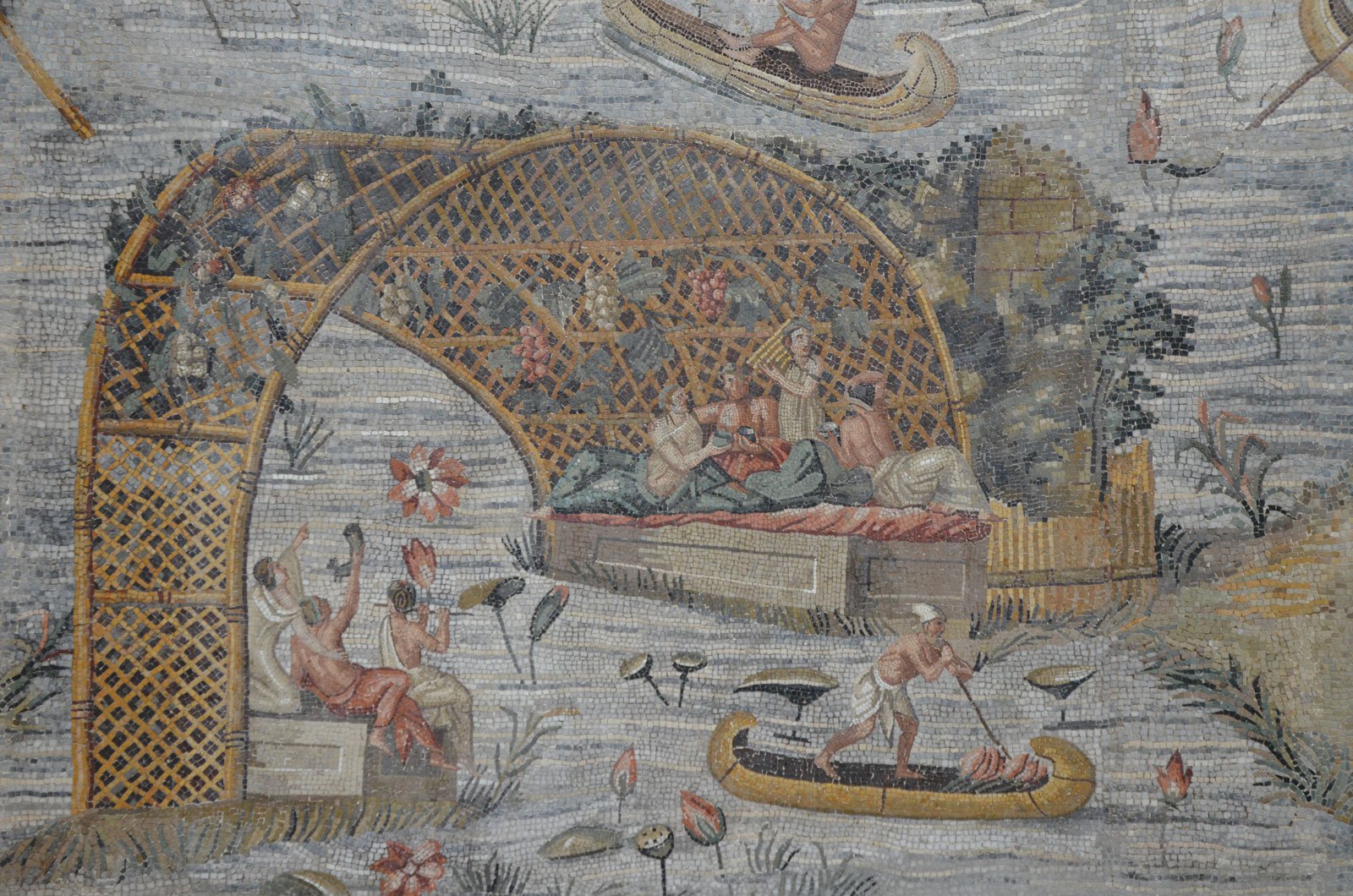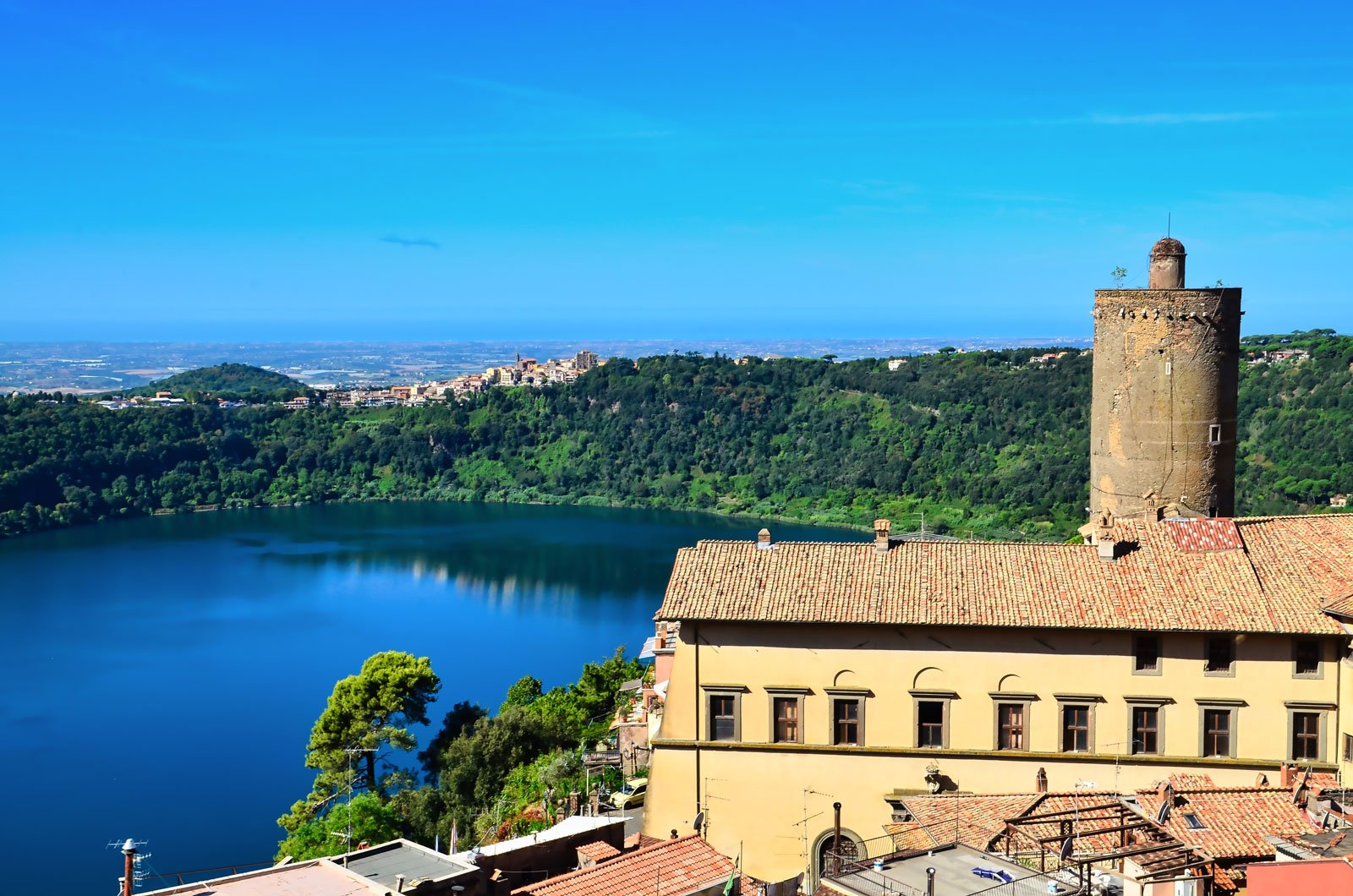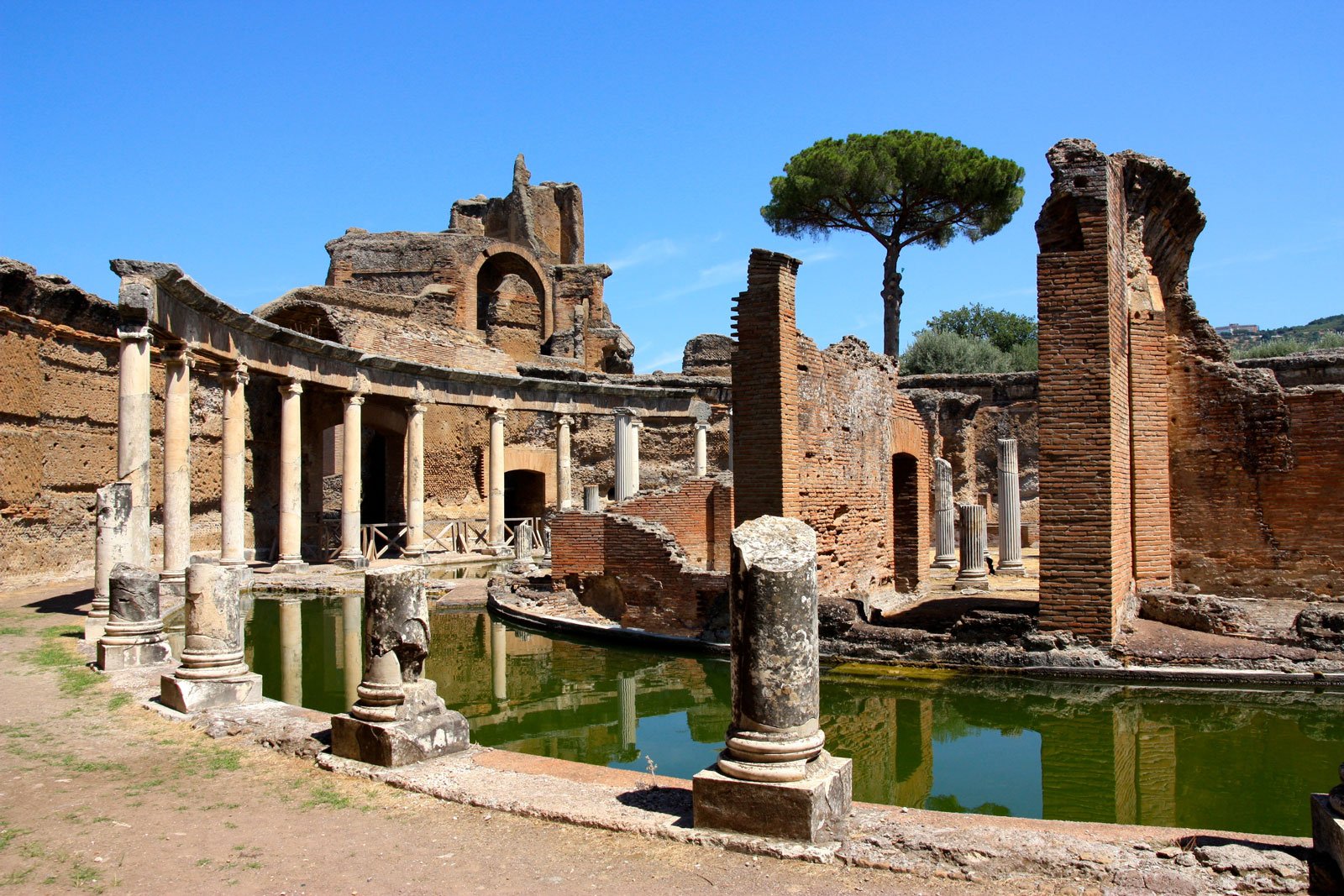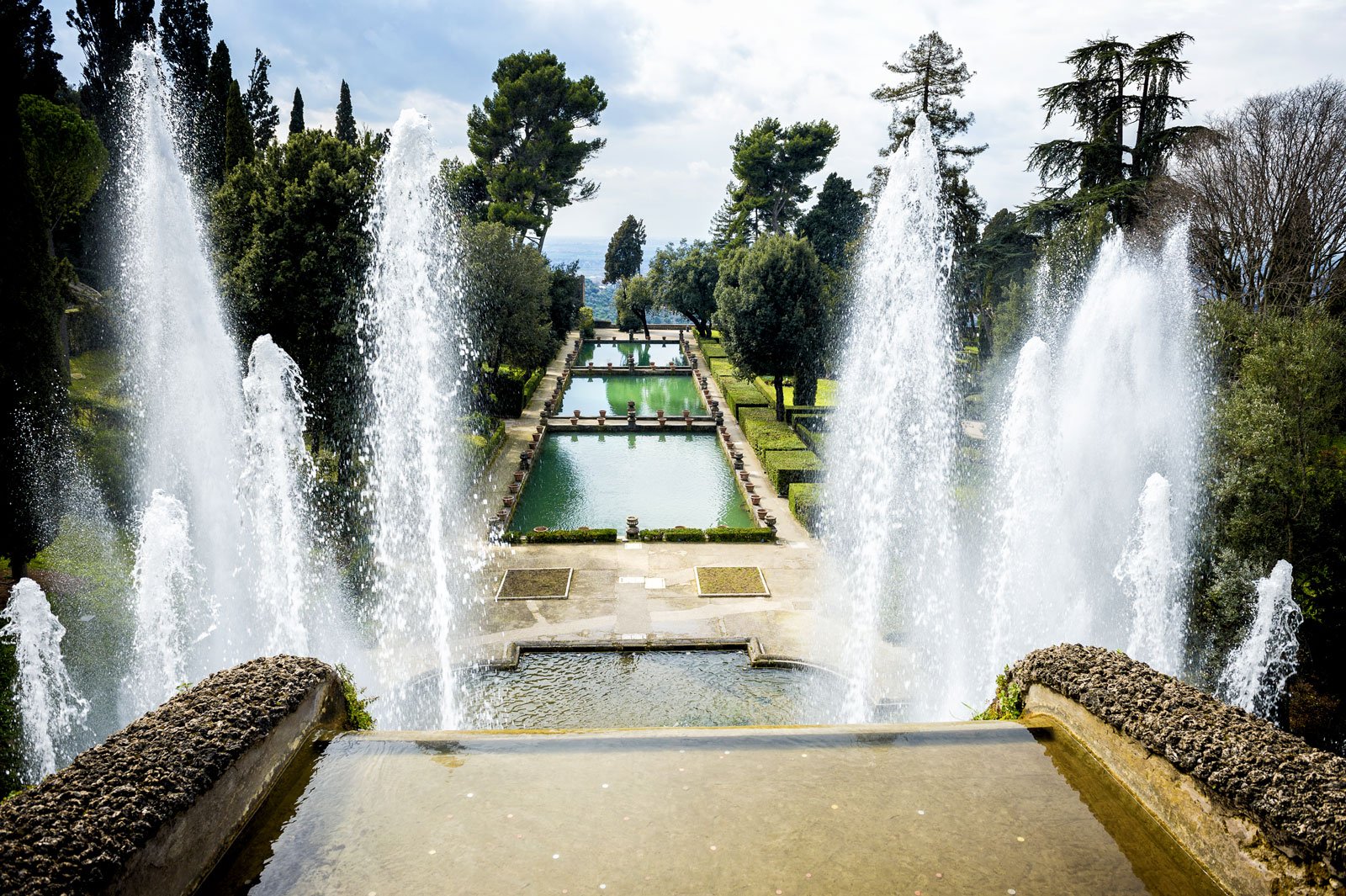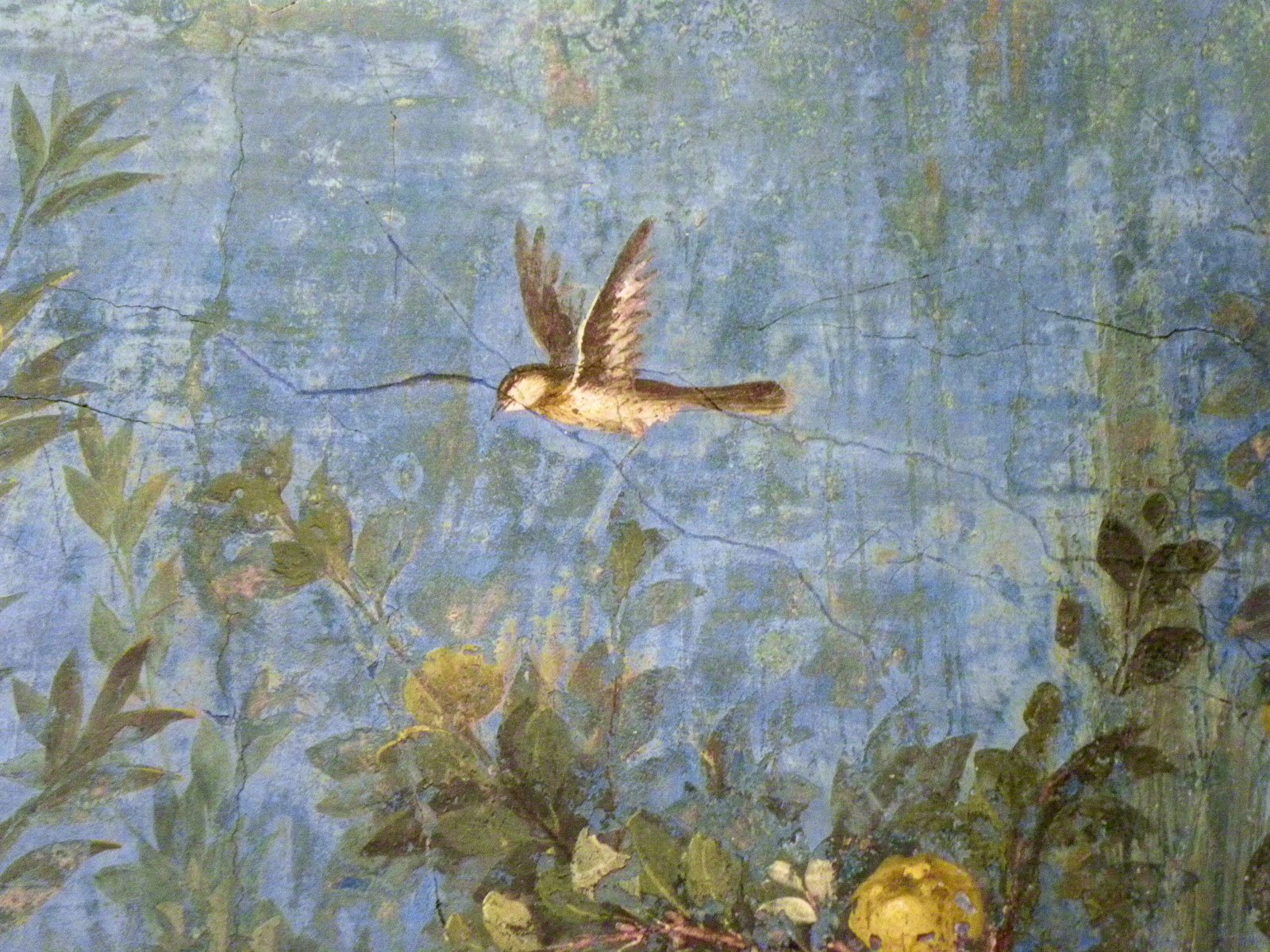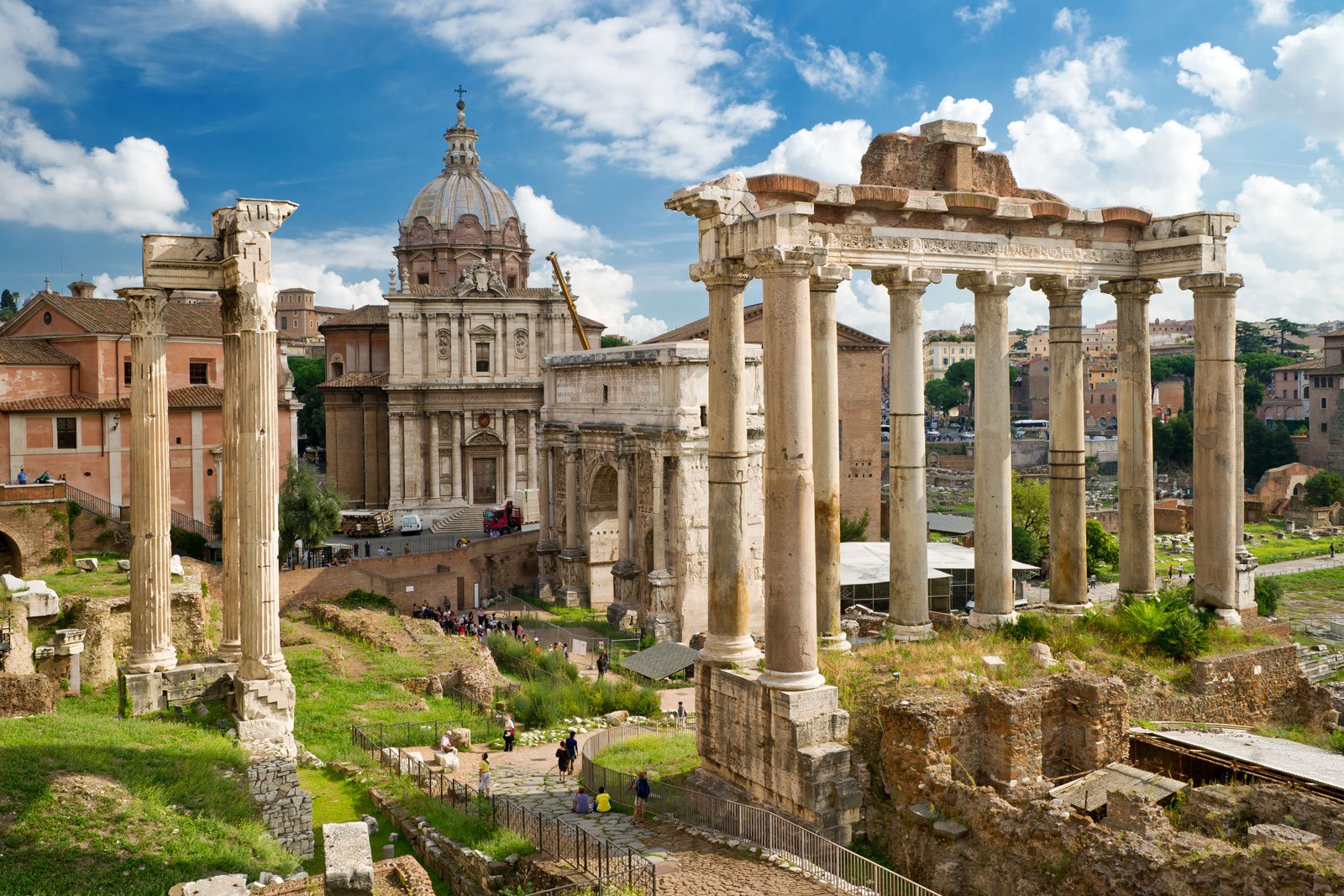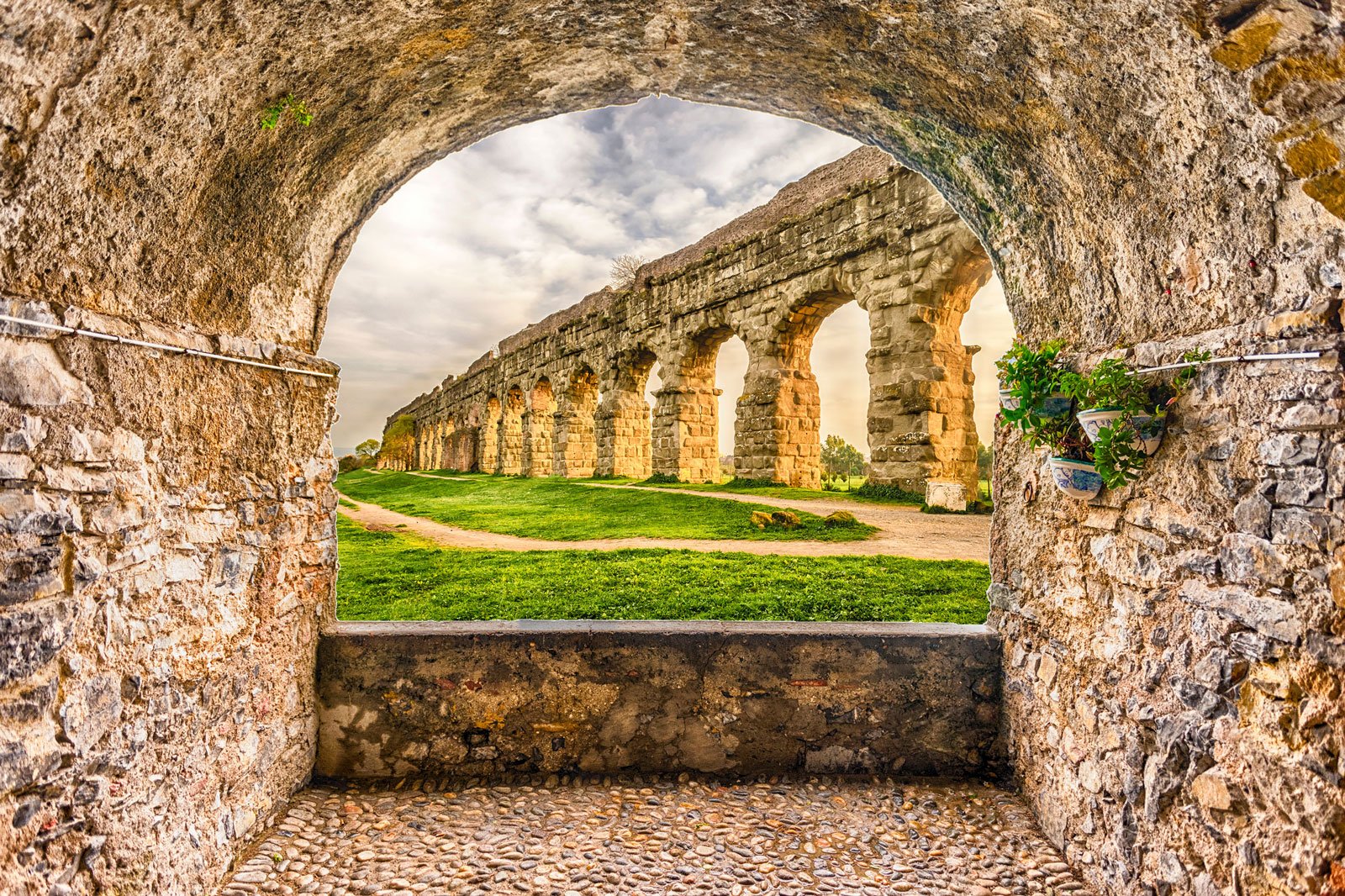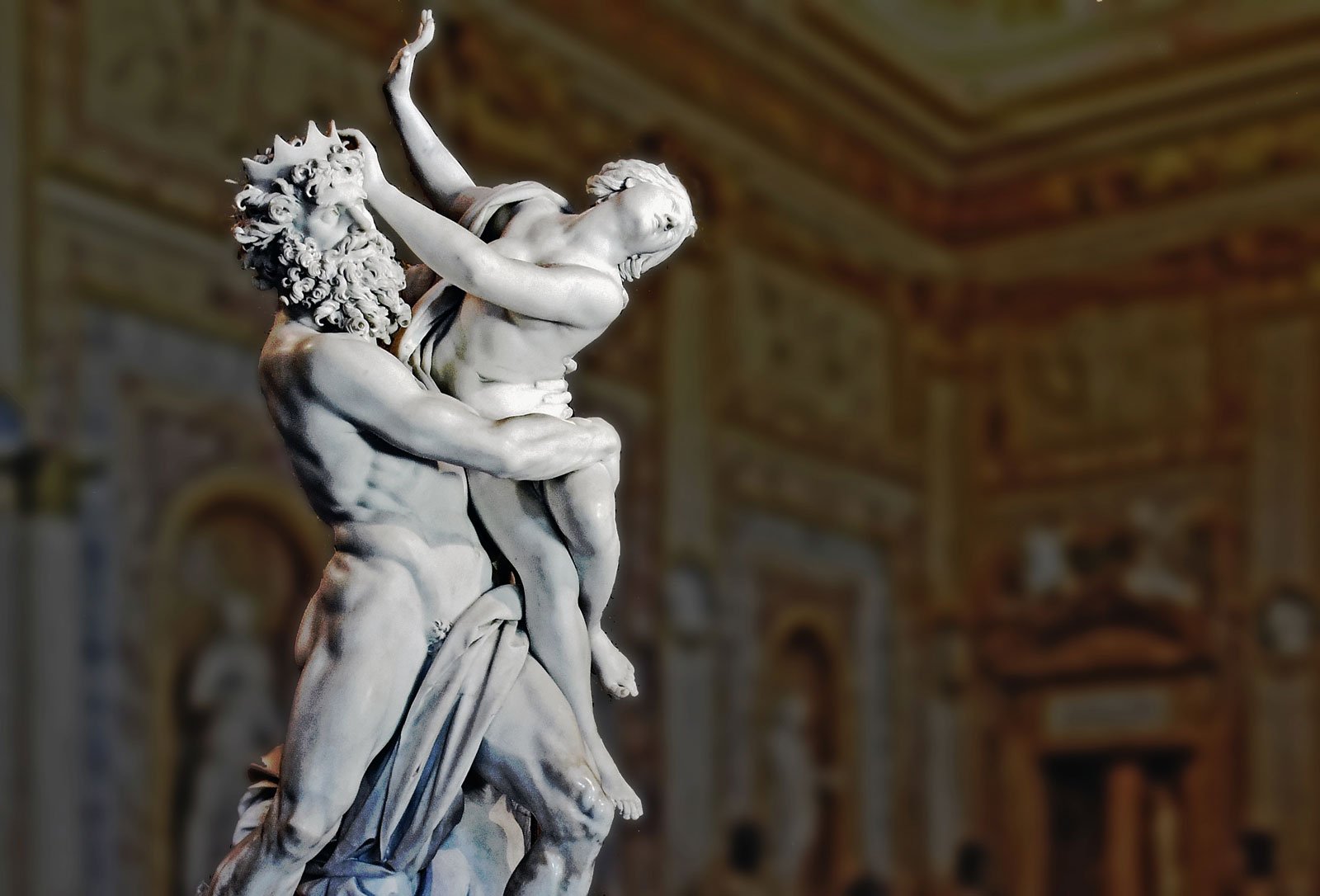
ancient rome in depth
05-18 january 2025
DR kathryn welch
Unpack your bags to explore an unparalleled wealth of history, art, architecture and archaeology in Rome and surrounds, on this residential-style tour with Roman historian Dr Kathryn Welch
OVERVIEW
Rome’s classical legacy is difficult to underestimate. In the city alone there remain impressive reminders of its influence on art, architecture, politics and law. Its most famous sites attract a constant flow of visitors for a reason, but there remains a wealth of fascinating alternatives who significance is rarely understood.
This 14-day tour led by Dr Kathryn Welch explores Rome and its surrounds in depth. The tour begins in the hills outside Rome that were as popular a retreat from the city through the centuries as they are with winemakers today. From our base in Frascati we explore a wonderful range of historic sites, from Hadrian’s Villa at Tivoli to wild Lake Nemi and its Ship Museum, as well as the hill-town of Palestrina.
We then enjoy 10 days in Rome, where Dr Welch walks you through the intersecting layers of history, from the origins of the city in the Forum and the glorious monuments of republic and empire, to sites that recall the introduction of Christianity in Late Antiquity and the re-imagining of the city in the Renaissance and Baroque.
A comprehensive series of background lectures during the tour gives you the context to get the most out of your guided site visits and walks, and accommodation in Rome’s vibrant Monti district lets you experience the colour of neighbourhood life.
TOUR LEADER
Dr Kathryn Welch has a PhD in Roman history from the University of Queensland and for 30 years taught Roman and Greek history at the University of Sydney.
Since her retirement in 2021, Kathryn has continued to pursue her academic research into the political and social history of Rome in the first century BCE. She has a strong interest in art, architecture and music, and in Italian history, culture and language. Together with Dr Estelle Lazer, she is co-director of the Pompeii Cast Project.
Kathryn is well known as an engaging public speaker to students of all ages. She has led special interest tours to Rome and the Bay of Naples since 1999.
Details
DATES:
05-18 January 2025
ITINERARY:
Frascati – 4 nights
Rome – 9 nights
PRICE:
$9,850pp twinshare
SINGLE SUPPLEMENT:
$1,650 for sole use of a double room
DEPOSIT:
$1,000 at the time of booking
FITNESS:
Above moderate
GETTING THERE:
The tour starts at Rome Fiumicino airport Terminal 3, at 2.00pm on Sunday 05 January 2025
GROUP SIZE:
Max. 20 people in a group
PLACES AVAILABLE
-
Uncover the Eternal City’s fascinating layers of history, art and culture, together with an ancient historian
Discover less-visited archaeological sites that reveal Rome’s rise to power, including Hadrian’s Villa at Tivoli, Palestrina’s extraordinary Nile mosaic, Nemi’s ancient ships and Nero’s Domus Aurea
Get more out of Rome’s sites with a specialist, from the Forum and Palatine to thermal baths and acqueducts
Understand Renaissance and baroque Rome’s influence, at the Villa Farnesina and Galleria Borghese
Admire the remnants of the Roman campagna on a day walk of the Appian Way
Live like a local, with four nights in charming Frascati and nine nights in Rome’s vibrant Monti neighbourhood
-
SUNDAY 05 JANUARY – ARRIVAL (D)
Our tour commences at 2.00pm this afternoon, at a meeting point in Terminal 3, Fiumicino airport, Rome. We meet our coach and travel to Frascati, a pleasant town south of Rome at the foot of the Alban Hills. The area, now known as the “Castelli Romani”, was popular with the ancient noble class, but a settlement at Frascati grew up later, and as a feudal possession it was associated with barons of the great Colonna and Farnese families. Over time, like the other towns of the Alban Hills, Frascati was celebrated as a retreat from the political life of Rome, and, after checking in to our hotel, we visit a nearby property with a history as a pleasure palace for the Roman elite. Afterwards, we enjoy a welcome drink and a light dinner in our hotel. Overnight Frascati.
MONDAY 06 JANUARY – CICERO’S TUSCULUM (PUBLIC HOLIDAY) (B, L)
The fertile soils of the Castelli Romani are the result of their formation as a volcanic crater over 36,000 years ago. Tusculum, situated on the edge of the Alban volcano, enjoyed a historic and strategic prominence, with some ancient writers identifing it as one of Latium’s oldest towns and with a position overlooking important Roman roads through the region. Systematic excavations of Roman sites in Tusculum began as early as 1806, and large villa complexes uncovered here have been attributed to luminaries from Cicero to Emperor Tiberius. We spend the morning exploring Tusculum’s archaeological park, before enjoying another side of the Alban Hills’ abundance – its wines. Grapes for wine have been cultivated in and around Frascati since the fifth century BCE, and in 2011 a white wine known simply as Frascati was one of the first to be awarded Italy’s highest appellation, DOCG (“controlled and guaranteed denomination of origin”). We sample the local wines on a tour of a winery in the Castelli Romani together with a group lunch, before returning to Frascati in the late afternoon. Overnight Frascati.
TUESDAY 07 JANUARY – PALESTRINA & NEMI (B)
While the Castelli Romani remain off the beaten tourist track, they preserve ancient artefacts and archaeological sites of extraordinary significance. We begin our full day’s excursion by admiring the Nile mosaic of Palestrina, a large and very detailed first-century BCE floor mosaic on an Egyptian theme. One of the best surviving examples of its kind, the mosaic had been discovered in the ancient town of Praeneste some time before the fifteenth century, and is an indication of the importance of this hill-top town. Settled at least by the eighth or seventh century BCE, as excavations in the ancient necropolis demonstrate, Praeneste was tied ever more closely to the growing fortunes of Rome, and a huge Sanctuary of Fortuna Primigenia, expanded ca 80BCE during the dictatorship of Sulla, was later incorporated into the Palazzo Colonna Barberini. We visit the archaeological site, in addition to the museum in the Renaissance palace that hosts the mosaic, before travelling to Nemi for lunch at leisure. This pretty town perches in a panoramic position over a small volcanic lake, sacred to the goddess Diana Nemorensis and incorporated by emperors such as Caligula and Tiberius into rituals that reaffirmed their right to rule. After lunch, we visit the Museum of the Roman Ships, a small museum on the lakefront dedicated to the fascinating history of the Nemi ships, luxurious barges constructed during the time of Caligula and later sunk in the lake. Painstakingly recovered during the Fascist era, they were destroyed by fire during World War II and have been reconstructed. Later, we will admire the ships’ bronze decorations, now exhibited in Rome’s Palazzo Massimo. Returning to Frascati, the evening is at leisure. Overnight Frascati.
WEDNESDAY 08 JANUARY – HADRIAN’S VILLA & THE VILLA D’ESTE (B, L)
Like Praeneste, Tibur (modern Tivoli) was a hill settlement that developed in ancient times, from a strategic position at the foot the Apennines into a favoured destination for healthful R&R. Maecenas, Augustus and Horace are all known to have had villas here, and poets such as Catullus and Statius celebrated the town’s beauties. Some time around 120 CE, Emperor Hadrian decided to create a veritable imperial city at the foot of present-day Tivoli, and Hadrian’s Villa is today one of the largest and most sophisticated surviving villa complexes of the Roman world. Never entirely forgotten, its imposing ruins remained a fertile source of inspiration for artists and architects from Raphael to Piranesi, as we discover on our guided tour of the large site. After a fine lunch in Tivoli town centre, we discover how Pirro Ligorio, superlative antiquarian and architect, drew more than pure inspiration from Hadrian’s Villa, incorporating ancient artefacts from the site into his sixteenth-century designs for garden terraces, fountains and water games at the staggering Villa d’Este. Returning to Frascati, the evening is at leisure. Overnight Frascati.
THURSDAY 09 JANUARY – TO ROME (B, D)
We check out this morning and travel to Rome, calling in first at Ariccia. One of Lazio’s oldest towns, in the Middle Ages it was a significant fief of baronial and papal families such as the Savelli and Chigi. These two dynasties are commemorated in the Palazzo Chigi, a baroque palace designed by Gian Lorenzo Bernini and Carlo Fontana that contains an important collection of seventeenth-century paintings. Continuing to Rome, we leave our bags at the hotel and, after time for lunch at leisure, visit a site that encapsulates the city’s many historical layers. The Baths of Diocletian were the largest of Rome’s imperial bath complexes, constructed after 298 under successive emperors and used until the Ostrogoths cut the city’s aqueducts in the sixth century. Such a large building project, with lavish ornamentation, did not fall out of view, however, and in the sixteenth century Pope Pius IV dedicated a church that incorporated elements of the Roman complex to Our Lady of the Angels and of the Martyrs. The resulting Basilica di Santa Maria degli Angeli includes the soaring designs of Michelangelo, who uses the ancient frigidarium and tepidarium of the baths to great architectural effect. In the late afternoon, we check in to our hotel and enjoy a drink together before dinner in a local restaurant. Overnight Rome.
FRIDAY 10 JANUARY – THE FORUM & THE CAPITOLINE HILL (B)
The genesis of Rome’s imperial glory can be traced back to the city’s humble origins in the area circumscribed by the present-day Forum, Palatine Hill and Capitoline Hill. And yet appreciating the many historical layers of this rewarding site can be difficult today, as the area continued to be developed by successive generations of rulers before sinking into obscurity as a “Campo Vaccino” or cow pasture during the medieval and Renaissance periods. We begin the day with a talk by Kathryn in the hotel, where she peels back these many layers of historical significance to explore the relevance of the site over the millennia. Afterward, we take a walking tour of the Roman Forum and Palatine Hill, setting the remains of structures ranging from humble huts to imperial palaces, senate houses and even early churches into the historical context that Kathryn has laid out. There is time for lunch at leisure before we continue to the Capitoline Museums, open to the people of Rome since 1471 thanks to the collecting impulses of Pope Sixtus IV, and today the location of a varied collection that includes significant works of classical sculpture, fascinating epigraphic pieces and outstanding Renaissance and baroque art. Highlights include the Capitoline Wolf, the equestrian monument to Marcus Aurelius, Caravaggio’s Fortune Tellers and The Dying Gaul. A private transfer takes us back to the hotel for an early evening talk, before an evening at leisure. Overnight Rome.
SATURDAY 11 JANUARY – THE COLOSSEUM & THE OPPIAN HILL (B)
Our hotel is located at the top of one of Rome’s seven hills, the Esquiline; at the base of one of its spurs (known as the Oppian Hill) lies a site whose architectural and cultural impact is difficult to overstate. We begin the day at the Colosseum, one of the world’s most recognisable ancient buildings and largest amphitheatre of the classical world. From the games anticipated during the time of the Flavian emperors to its transformation into a medieval shrine – and quarry – the Colosseum is a fascinating reflection of the power, organisation and interests of the romani over the 2,000 years of its existence. There is time to explore independently after Kathryn’s on-site introduction, before a simple lunch at leisure. In the early afternoon, we have a special visit inside the Oppian Hill itself, in a guided light-and-sound tour of the so-called Domus Aurea. Newly opened to the public after years of excavation and stabilisation, this extraordinary “golden house” was a defining project of Emperor Nero’s reign, a lavish and – some argued – decadent site whose extensive grounds included a lake that would later be cleverly incorporated into the design of the Colosseum. In the late fifteenth century, the Domus Aurea was accidentally rediscovered, and the fresco ornamentation that artists like Raphael and Michelangelo found in its cave-like rooms gave rise to a new style that was named the grottesca or “grotesque” in its honour. Afterwards, we continue to another nearby site at the base of the Oppian Hill, the celebrated ‘lasagne church’ of San Clemente. Late in the 1860s, the prior of the Irish Dominicans resident here discovered an enormous archaeological site beneath the medieval marbles and Renaissance frescoes of the twelfth-century basilica at ground level. These included an early fourth-century church, which grew in prominence out of its first-century origins as a nobleman’s house and would later be covered in ‘Dark Age’ frescoes of an excellent quality, and – even further down – sections of a Roman drain network and a second-century mithraeum, dedicated to the popular mystery cult. A private transfer takes us back to the hotel after our visit, for an evening at leisure. Overnight Rome.
SUNDAY 12 JANUARY – THE ESQUILINE HILL (B)
Today we explore the major sites of the Esquiline, the hill on which our hotel sits. We start with a visit to the nearby Palazzo Massimo alle Terme, an outstanding museum dedicated to Roman sculpture, fresco, mosaic, jewellery and coins. Despite its superlative collections, it is much less known to visitors, and it is possible to make a careful and in-depth circuit of its highlights. These include The Boxer at Rest, a powerful bronze sculpture of perhaps the fourth century BCE, the Nemi bronzes of Caligula’s ships, and a large collection of detached Roman frescoes that includes Livia’s sublime ‘garden room’ frescoes from her villa at Prima Porta. There is time for lunch at leisure near the museum, after which we visit a number of churches in our neighbourhood that exemplify Christianity’s rise to power after the breakdown of the Roman Empire. Santa Pudenziana was constructed in the second century CE, incorporating ruins of a nearby Roman bath house and with a precious fourth-century apse mosaic that indicates how Christian symbols developed from the Church’s earliest times. Nearby, a simple fifth-century foundation at Santa Prassede was rebuilt and redecorated over the eighth and ninth centuries, with Pope Paschal I commissioning a mosaic cycle that still survives in part, and a significant collection of relics that includes the column against which Christ was flogged during the Passion. These two foundations indicate the important role played by upper-class women who were early converts to Christianity, together with the growing influence of the bishops of Rome, or popes, in the growth of the early Church. Santa Maria Maggiore, which we also visit, is one of the best examples of the latter, founded ca 352 after a miraculous snowfall indicated the ideal site. The imposing structure that we admire today essentially preserves the fifth-century basilica sponsored by Pope Celestine I or Sixtus III, with an impressive cycle of mosaics that highlight the emerging role of the Virgin Mary as Mother of God, following the Council of Ephesus in 431 CE. The basilica is still one of Rome’s most holy pilgrimage sites. The later afternoon and evening are at leisure. Overnight Rome.
MONDAY 13 JANUARY – THE PARCO DEGLI ACQUEDOTTI (B)
The day begins with a talk in our hotel, followed by a simple trip by public transport to the Parco degli Acquedotti. This large park bears witness to the challenges faced by an imperial capital, particularly the soaring aqueducts that carried water over long distances – by gravity alone – to supply public baths and toilets, the fountains of private households, and even manufacturing processes such as milling. Kathryn introduces us to the two aqueducts that make their way through the park: the Aqua Claudia is a first-century aqueduct that was begun under Caligula and finished during the reign of Claudius. Covering a distance of almost 70km, it was carried across the Porta Maggiore to a cistern located not far from our hotel on the Esquiline Hill. From here, it was piped out to the city’s districts. The Acqua Felice, on the other hand, is named for its sixteenth-century donor Pope Sixtus V, born Felice Peretti and intent on emulating the social patronage extended by Roman emperors. Sixtus’s aqueduct utilised portions of the Roman Aqua Alexandrina and covered more than 20km before reaching its final destination in Rome on the Quirinal Hill, marked by Domenico Fontana’s Acqua Felice Fountain (1587). After time for lunch at leisure, we continue our explorations at San Giovanni in Laterano, the seat of the bishop of Rome. Its foundation is traced to the early decades of the fourth century, when the site was given to the bishop of Rome by Emperor Constantine. One of Rome’s oldest churches, a major pilgrimage destination, and one of the city’s major papal basilicas, San Giovanni in Laterano preserves significant works of art and architecture, from its influential baptistery to a gracious thirteenth-century cloister in the style of the Cosmati family and the largest standing Egyptian obelisk in the world. There is a talk in the hotel tonight, before an evening at leisure. Overnight Rome.
TUESDAY 14 JANUARY – THE FIELD OF MARS (B)
The Campus Martius (Field of Mars) had been an open public space between the walls of early Rome and the Tiber to the northwest. But the rapid urban growth of the first century BCE led to parcels of it being sold off for development and the construction of some significant public buildings such as Pompey’s Theatre. The region was incorporated into the city in the Augustan period, and this relatively open space became the place where some of the great monuments of the imperial period were built, from the Ara Pacis and Mausoleum of Augustus to the Pantheon. After the decline of Rome, the Campus Martius became the core of the medieval city, and this continuous inhabitation and rebuilding over the centuries has made it one of the most densely layered parts of the city, the remains of its illustrious past still visible in medieval, Renaissance and Baroque redevelopments. Today we undertake a walking tour of this remarkable district, commencing from Campo dei Fiori and visiting a wealth of sites, including Piazza Navona (which retains the form and some of the material of the Circus of Diocletian), the Pantheon, and Caravaggio’s first major public commission at San Luigi dei Francesi. After a break for lunch, there is the option to continue exploring the district with your tour leader, or to enjoy an afternoon at leisure. Overnight Rome.
WEDNESDAY 15 JANUARY – IN TRASTEVERE (B)
A private transfer this morning takes us across the Tiber (or, “Trastevere”) to a Roman neighbourhood that became associated with the dolce vita of Cinecittà’s stars during the 1960s. Before this, however, it was a district with a distinctly different character, from fishermen and immigrants during the Republican period, to a brace of beautiful aristocratic villas and a sizeable Jewish community. By the Middle Ages, parts of Trastevere were indelibly associated with the working classes, and it kept this association until very recently. Nevertheless, proximity to the river and to the Vatican ensured its strategic importance into the Renaissance, and we begin our day with a guided tour of the jewel that is the Villa Farnesina. Designed by Baldassare Peruzzi as an elegant hide-out for wealthy papal banker Agostini Chigi and his mistress, the villa’s relationship to its riverside garden had an enduring influence on subsequent architects, such as Andrea Palladio, and its frescoes by Raphael and his workshop, then at its apex, are among the most delightful works of Renaissance art in the entire city. There is time to explore Trastevere’s cobbled streets independently after our visit. Evening at leisure. Overnight Rome.
THURSDAY 16 JANUARY – BAROQUE ROME (PUBLIC HOLIDAY) (B, D)
With the Church repositioning its strength after the Counter Reformation, and growing in material wealth again following the difficult century of the Italian Wars, Rome in the seventeenth century was on the make yet again. Its population swelled, and an international contingent of great artists and architects returned to work for its patrons, from northern Italians like Caravaggio and the Carracci family workshop to the best artists from the Dutch Republic and the emerging nation of France. Today we explore Rome during the Baroque, commencing with a private transfer to one of this period’s most glorious sites: the Galleria Borghese. Beautifully located on the edge of a huge parklands, in a seventeenth-century party villa, this collection reflects the exquisite taste of Scipione Borghese and subsequent generations of this powerful papal dynasty, with virtuoso sculptures of Gian Lorenzo Bernini commissioned for this very building, and one of the finest (and largest) collections of works by Caravaggio in one gallery. There are also outstanding classical pieces, collected by the Borghese, and fine paintings from Antonello da Messina to Raphael. After time for lunch at leisure near the one-time artists’ quarter of the Spanish Steps, we survey a number of palaces and churches associated with the baroque renewal of Rome, clustered on the Quirinal Hill and designed by the likes of Bernini and Borromini. There is a talk in the hotel, before an evening at leisure. Overnight Rome.
FRIDAY 17 JANUARY – THE APPIAN WAY (B, L)
Today a private transfer takes us outside the Aurelian Walls and into the remnants of the Roman Campagna that still lie just beyond the urban heart of the city, a pleasing jumble of ruins of Roman tombs and villas, early Christian catacombs and – even still – the occasional flock of grazing sheep. Cutting through this landscape, and still connecting Rome to the south of the Italian peninsula, is the Appian Way. Named for the Roman censor who began work on this military infrastructure ca 312 BCE, the road grew into a general highway to the south. Good walking shoes are required today, as we walk a section of the Appian Way, calling in at sites of interest as we go and ending with a farewell lunch not far from the imposing first-century BCE Tomb of Caecilia Metella. On our return to the hotel, we call in at the Circus of Maxentius, the best-preserved though possibly least used of Rome’s circuses. We reflect on Rome’s many historical layers over farewell drinks in our hotel tonight. Overnight Rome.
SATURDAY 18 JANUARY – DEPARTURE (B)
Tour arrangements conclude today, after breakfast in our hotel. Pending group members’ departure arrangements, there is a private transfer to Rome Fiumicino airport today; please contact us for more information. Our partners at Mary Rossi Travel will be pleased to advise on onward travel, including flights, accommodation and travel insurance.
-
Hotel Flora 4* Frascati, 4 nights
https://www.hotel-flora.it/en/
A small hotel set over two nineteenth-century buildings, well-located in a pretty hill town. Frascati is now a pleasant dormitory suburb of Rome, and therefore well-equipped with restaurants and shops selling practical items.
Hotel Quirinale 4* Rome, 9 nightshttps://www.hotelquirinale.it/en/
A restored nineteenth-century property in a central location, ensuring walking distance to many sites and proximity to restaurants for independent dining.
We have selected Standard rooms, on average 23sqm, which have been renovated in a classic salon style.
NB: hotels of a similar standard may be substituted.
-
13 nights’ accommodation at 4* hotels
All breakfasts and 6 lunches or dinners
All ground transport, guided tours and entrance fees to sites as mentioned in the itinerary, and tipping
Expertise of and commentary by an Australian tour leader throughout, including a comprehensive series of talks in the hotel
Expertise and assistance of an Italian-speaking local tour manager throughout
-
A $1,000 deposit is required at the time of booking to confirm your place on this tour.
We’ll invoice you for the balance due on 22 October 2024.
-
When you book on one of tours, we ask you to accept our terms and conditions.
Book Your Place
A deposit of $1,000 is required at the time of booking to hold your place on this tour.
Need time to confirm your plans?
You can hold a place with no obligation for 7 days while you check your other arrangements
Questions?
Get in touch with us on (02) 8599 4201 or by email



